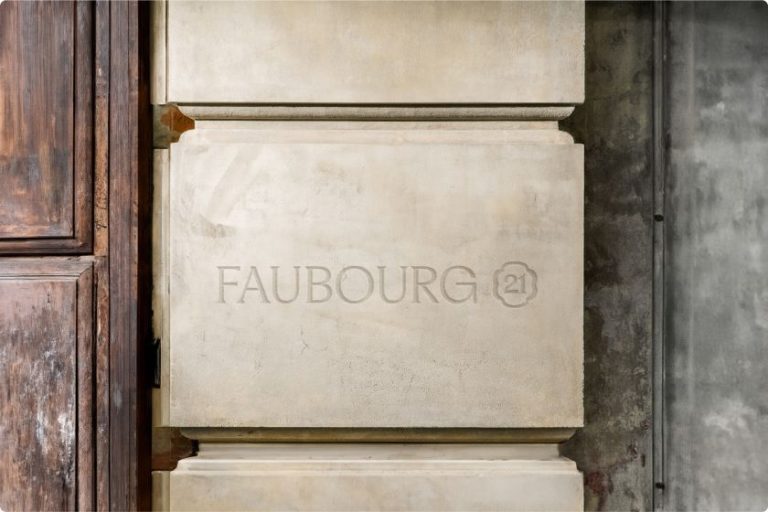Koto Motion Director Santiago Avila explores how motion has evolved from an afterthought to a strategic necessity, why brands should invest in motion-first identities, and what the future holds for dynamic branding.
It’s no secret that brand identities are no longer static. Motion has become a fundamental way brands communicate, engage, and stay recognisable across digital and physical worlds alike.
While the industry is starting to catch on, too many still treat motion as an add-on. Dropped into a brand film, a product demo, or a one-off social post, rather than built into the system.
The truth is that most brands are behind. They treat motion like glitter, slapping it on at the end, instead of baking it into the core. It’s overlooked, misused, or worse, ignored completely – when it should be doing the heavy lifting.
In a screen-led world where attention is brutal and fleeting, motion shouldn’t just look good. It’s how your brand presents itself, moves, and connects in real-time.
Back in the day – over ten years ago – it was already reported that 33% of people stopped watching a video after 30 seconds, 45% after a minute, and 60% after two. Today, those numbers have probably risen even further. There’s no doubt that attention is tighter and stakes are higher.
Yet, video remains one of the strongest drivers of ROI. Wistia’s latest State of Video confirms it. But too many brands still fail to effectively integrate motion into their identity systems. Even when they do, it’s often inconsistent.
The opportunity is clear, with research showing that storytelling can increase product value by up to 2706%. Motion branding makes storytelling sharper, richer, and more immersive. Static assets just can’t compete.
So the question becomes: how can brands catch up and get ahead before the gap gets even wider?
From add-on to strategic foundation
Let’s first clarify that motion isn’t new. It’s been part of branding for decades – from broadcast design to animated logos – but it’s rarely been treated systematically. Historically, it has shown up where it needed to: on TV, in sports, and at live events. It was there to support.
But the game has changed. Brands now live across screens, whether it’s digital billboards, feeds, or product interfaces, as well as physical environments. Content needs to be flexible, adaptable, and grab attention quickly. Motion isn’t an execution anymore – it’s infrastructure.
We’re already seeing some sectors lead the way, such as fintech, software, and AI. OpenAI is a great example, with its stripped-back, geometric, minimal motion language. You won’t see any bells and whistles here – just a clean, confident, sound-driven movement that builds trust. Instead of leaning into a futuristic aesthetic, they’ve opted for a timeless one, which says a lot considering what their product is.
Regardless of the sector, the process of integrating motion should always begin with a brand strategy. A sharp idea comes first, and from there, it’s about defining motion principles –traits that describe how a brand moves and feels. These principles get translated into behaviours, which are animated actions that play out across key touchpoints. It’s structured, consistent, expressive and – above all – tied to strategy.
The business case for motion branding
This isn’t just a creative argument – it’s a business one.
Done well, motion builds recall, drives engagement, and helps systems scale. Take Deezer as a prime example. When we rebranded them in 2022, motion wasn’t tacked on. It was part of the core identity from the very beginning.
The strategic idea centred around music as a form of movement. This led to principles such as rhythm, modularity, and responsiveness. From there, we developed simple shapes that pulse and shift to reflect genre and mood. Think fast, tight bursts for dance music and smooth, flowing gestures for jazz. Without motion, that whole story falls flat.
Figma is another standout. Their motion system is expressive yet always functional, echoing the real mechanics of the product. Swirling lines reference drawing tools, expanding shapes mimic selections, free-flowing forms suggest collaboration. It’s abstract, but grounded and does the job of narrating without overwhelming.
What it takes to build a motion-first identity
To establish a strong motion identity, brands must adhere to a few key principles.
First: recognition. Your system needs to feel consistent across platforms, but that doesn’t mean it has to be boring or repetitive. The best motion systems are simple, distinctive, and scalable.
Second: purpose. Every movement should do something. Whether it’s guiding interaction, deepening the story, or reinforcing brand recognition, motion should be intentional and purposeful. More isn’t always better.
In product-driven brands like Google or IBM, motion becomes part of a broader design grammar. Every transition, type movement, or interaction pattern is defined and refined to support usability. In contrast, categories like sports broadcasting rely on distilled mechanics, like strong typographic systems and symbolic behaviours that scale.
Third: don’t forget platform nuance. What works in a TikTok clip won’t necessarily work in an app or across an out-of-home campaign. The core must flex, but the identity must remain intact.
Above all, motion can’t be an afterthought. It needs to be involved from the start. When motion designers are brought in early, you don’t just get better animations – you build better brands.
The future of motion branding
Future-proofed brands have to move. We’re heading toward dynamic systems that adapt in real time and brand identities that aren’t just animated – they’re responsive, alive, and shaped by data.
But the most exciting shift is cultural. The brands that will stand out are the ones that marry strategic motion with a more informal, platform-native aesthetic. Think TikTok energy meets system thinking, raw meets refined, and coherence without stiffness.
AI is starting to enter the space, but it hasn’t arrived yet. It’s helpful for content generation, but not for building motion systems. Strategy still needs humans. And when AI starts to shape motion experiences based on data, that’s when things get interesting.
Spotify Wrapped nails this. Personalised, expressive, emotional – all through motion. A great example of how dynamic animation can make users feel part of the story, not just spectators.
Motion-first branding isn’t new, but it’s finally getting its due. Some brands are leading while others are catching up. Many, though, are still stuck treating motion as decoration.
Here’s the bottom line: in a world where attention is scarce and engagement is everything, motion isn’t extra. It’s the new normal.










